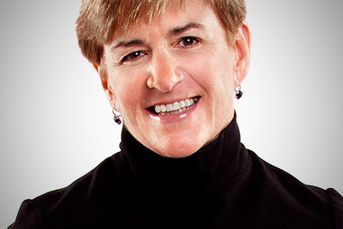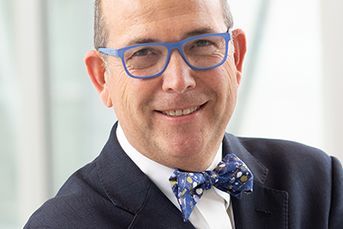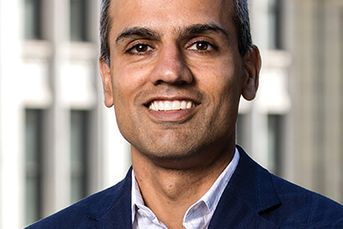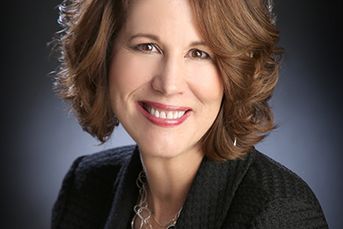Financial studies flourish at academies
Investment advisers have been helping to bring a network of “academies of finance” to life in high schools across the country, teaching classes and mentoring students, some of whom have gone on to careers in financial services
Investment advisers have been helping to bring a network of “academies of finance” to life in high schools across the country, teaching classes and mentoring students, some of whom have gone on to careers in financial services.
The program was founded in 1982 by Sanford I. Weill, chairman emeritus of Citigroup Inc., to enable disadvantaged New York high school students to pursue careers in finance. There are now about 250 such academies nationally.
Each functions as a school within a school, with a curriculum focused specifically on subjects related to financial services (e.g, banking and credit, financial planning, international finance, securities, insurance, accounting and economics).
The caliber of the students who take part in the program, which targets largely at-risk urban schools, is reflected in its participants’ graduation rates — 90% complete high school, and more than 80% of those graduates continue on to college.
Financial-industry volunteers “are at the crux of our ability to deliver these services,” said Colleen Devery, assistant vice president of strategic initiatives with the National Academy Foundation. Supporters from some 1,750 companies (primarily financial firms) teach classes, review curricula, raise funds, mentor students, serve on advisory boards and arrange for paid summer internships for students.
“When I sit one on one with one of these kids, it can be life-changing — for both of us,” said Ethan Reid, a second vice president of The Barnes Group at Morgan Stanley Smith Barney. He volunteers with High School Inc., a two-year old academy in Hartford, Conn. The program serves 400 public-school students in grades nine through 11.
“I’ve been on the board of directors since Day One. It’s a real partnership between the public schools and the business community. Twenty companies are represented on the board,” Mr. Reid said.
Mr. Reid, a graduate of the public-school system, wanted to serve as a role model. “I taught an eight-week course on banking, and I developed a relationship with the students. They need a positive influence, to learn how people act in the outside world,” he said.
The community benefits, too. “This program is immeasurably important for developing our future work force. Our area leaders say there is a huge [worker] gap between their retiring executives and their potential replacements,” Mr. Reid said.
In San Diego, that new work force is becoming a reality. “Many of the kids who have interned [at our company] are still working here,” said Steve Lahre, a senior vice president and financial adviser with Morgan Stanley Smith Barney LLC. Mr. Lahre was a finalist in the mentoring-excellence category of the 2010 Investment News/Invest in Others Charitable Foundation’s Community Leadership Awards for his activities at an academy within San Diego High School.
“What is really cool about the program — they hold the kids accountable for their grades and their attendance. And the reward [is] a practical pathway to a job,” he said.
“The kids learn that there’s more to life than working at McDonald’s,” said Erik Sussman, a managing partner with John Hancock Financial Network Inc.’s South Florida Group. A deeply committed volunteer, he is vice chairman of the Miami-Dade County Public Schools’ Academy of Finance Executive Board. Thirteen high schools each host an academy, serving about 3,500 students in total.
Besides internships, Mr. Sussman cites the impact of programs such as mentoring, job shadowing, an annual trip to New York to visit Wall Street and other significant sites, and an annual student industry conference, modeled after a professional-development event. The conference, with attendance of more than 500 students, features an opening session and keynote speaker, followed by breakout sessions in soft skills (e.g., résumé writing, interviewing, self-marketing) and financial services careers.
CAREER-ORIENTED
In the three Seattle academies, “the most meaningful activity to the kids is the annual career conference,” said Jim Nicholson, senior director of investments for the HNH private-client group of Oppenheimer & Co. Inc. During the conference, “the students meet with professionals from multiple industries related to finance. We let the kids direct the flow of questions. They want to hear about different career paths,” Mr. Nicholson said. “Also incredibly popular are the sessions with program graduates, young professionals who are just entering careers. The high-school students want those contacts.”
The program graduates are helping to sustain the academies, Mr. Nicholson said, noting that four are now active on the advisory board.
Mr. Nicholson has served on the Seattle academy advisory board for 22 years. He also gives classroom presentations, such as a 10-week stock market simulation game wherein students research companies and make purchases and sales.
The relevance of the curriculum is the key to the program’s success, he said. “The kids think, “Why should I learn this?’ — and here’s the application of what they’re learning. It’s an “aha’ moment.”
Learn more about reprints and licensing for this article.








